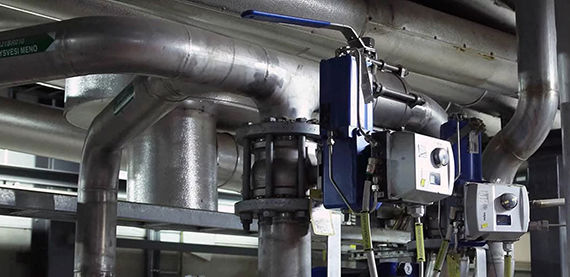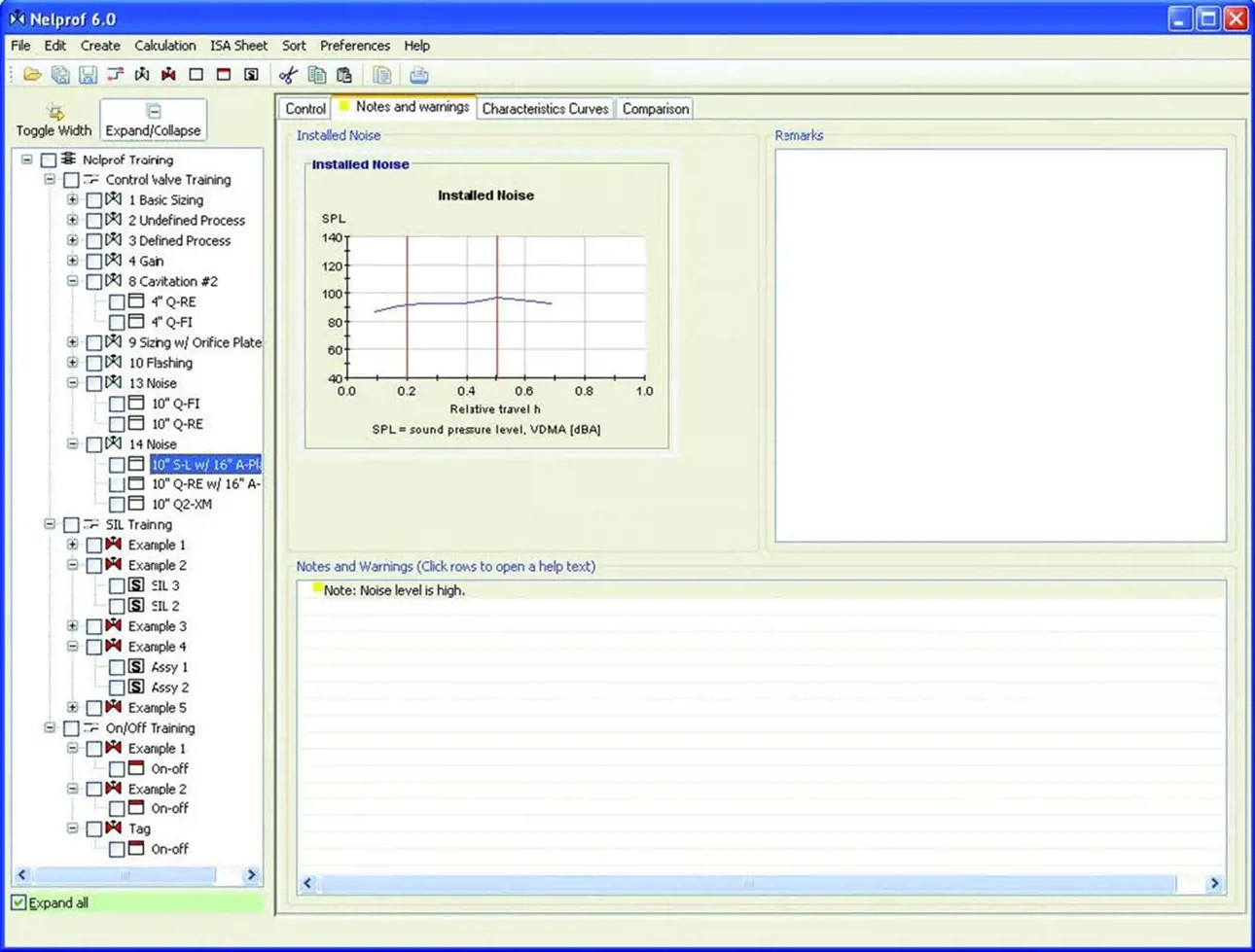Important points in valve selection
Achieving optimal travel is among the important factors to consider. Travel at normal flow should ideally fall within a 50 to 60 percent opening angle. Travel at maximum flow should fall below 90 percent for rotary valves and 70 percent for linear valves. Minimum flows should always be above 20 percent to avoid erosion of the trim, especially on linear valves. It is not uncommon to have a control valve smaller than the actual pipe size. As a rule, the recommended valve size should not be less than half the diameter of the pipeline to prevent valve damage caused by piping stress.
The installed gain curve is a very good indicator of valve performance in specific conditions. A constant gain line at 1.0 within the control range is ideal. For the best results, the gain should be between 0.5 and 3.0, and the ratio of maximum to minimum gain should be ≤ 2.0.
Erosion damage is closely associated with the velocity of the media. Maintaining a proper velocity, especially when media is erosive or flashing, is important for extending your valve life. In such cases, moving to a larger valve may be considered to decrease velocities and thus potential damage to the valve.
Aerodynamic noise is strongly related to exit velocity of media. The concern here is mechanical damage caused by intense vibrations. To prevent mechanical damage to your valve assembly, noise levels should be kept below 110 dBA.
Hydrodynamic noise is used to predict cavitation intensity. Generally, if you want to eliminate damage you must lower noise to an acceptable level, which in turn means lowering the intensity of the cavitation. For specific noise recommendations, review your specific valve sizing software for noise levels applicable to your specific size valve.
Well-developed expert sizing and selection software solutions also offer a broad set of tools that can be used to detect a wide range of problems that can occur. Some of the most common problems that the software can help address include noise and cavitation related issues as well as issues related to high actuator load factors. The software can also provide solutions for media flow issues, such as an excessively high flow marginal and high flow velocities at both the inlet and outlet ports.
For a link to download our expert valve sizing software, please click here.
Text by Steven Hocurscak. For additional information, please contact joonas.korhonen@valmet.com.
The text has been updated in April 2022, due to the company name change to Valmet.




